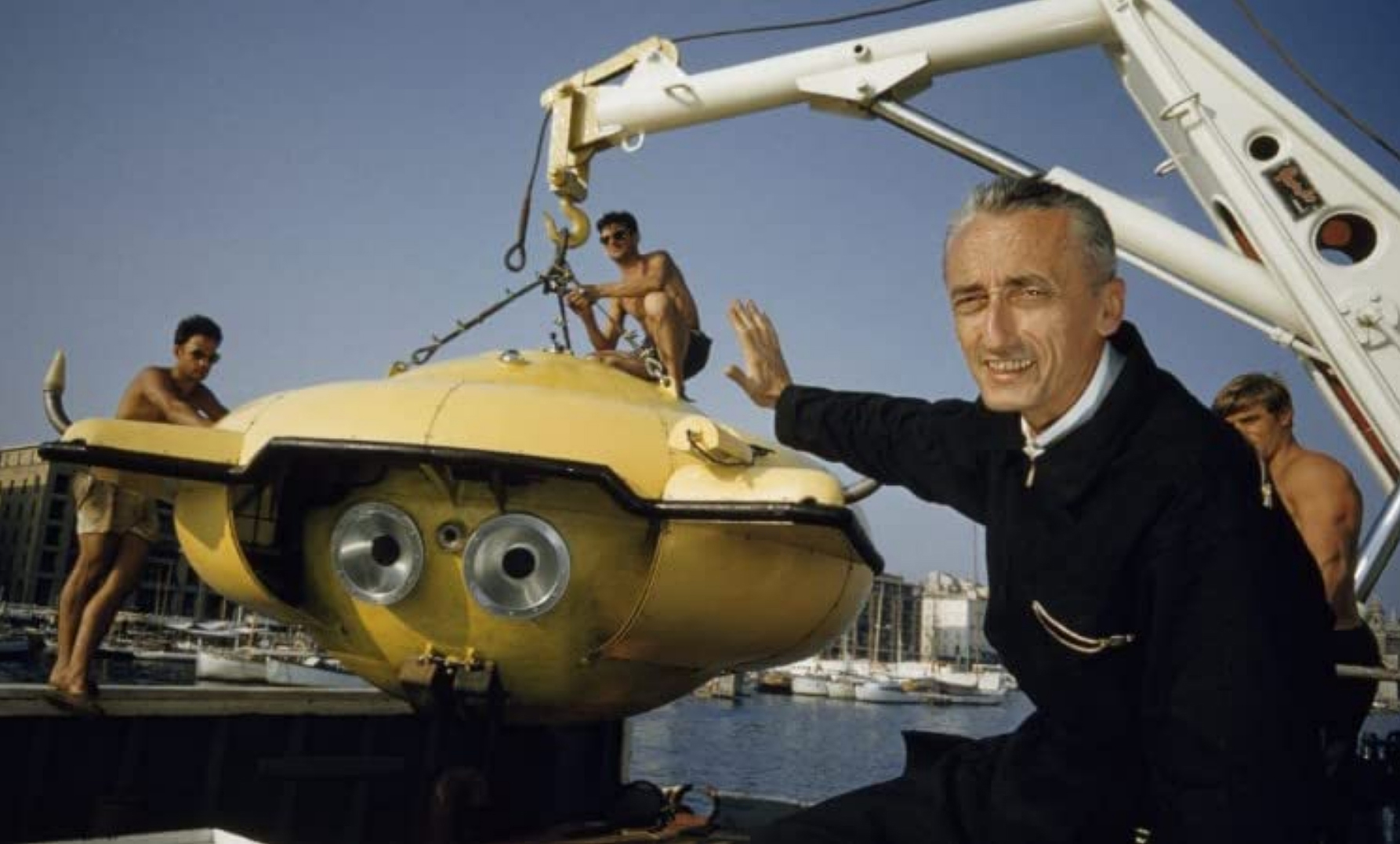
- Film
Docs: “Becoming Cousteau”: Liz Garbus Chronicles a Legendary Pioneer
In 1956, when the French diving pioneer Jacques-Yves Cousteau (1910-1997) made his documentary, The Silent World, in 1956, it was a novelty in many ways that he himself could not have anticipated. The feature was co-directed by Cousteau, who was then 46, and a young director, Louis Malle, 24, who would go on to become a major voice in French and world cinema (Lacombe Lucien, Atlantic City, Au Revoir les Enfants) in the next three decades. Edited from footage taken from excursions on Cousteau’s trusty research vessel Calypso, by him and his small team, it revealed the strange majesty of “ocean life,” as he called it, a rich, unknown under-water world.
Audiences couldn’t get enough of 20-foot sharks, bizarre yet beautiful octopuses, fluorescent fish, porpoises and manta rays cavorting in turquoise waters, all often existing amid shadowy shipwrecks and grottos. At the 1956 Cannes Film Festival, the film won the top award, the Palme d’Or — the only documentary to earn that honor until 2004, when Michael Moore’s inflammatory documentary, Fahrenheit 9/11 took that prize. It was released in the U.S. by Columbia Pictures on September 24, 1956, and earned $3 million at the box office, an impressive figure for that time (over $40 million today, when adjusted for inflation). On March 27, 1957, it won the Best Documentary Feature Oscar.
In the new documentary, Becoming Cousteau, from National Geographic Documentary Films, two-time Oscar-nominated filmmaker Liz Garbus takes an inside look at Cousteau and his life, his iconic films and inventions, and the experiences that made him the 20th century’s most unique and renowned environmental voice.
The feature, which world premiered at the Telluride Film Festival and also played at Toronto this year, pays tribute to Cousteau in his various roles: Adventurer, filmmaker, inventor, author, unlikely celebrity and conservationist. Garbus uncovers troves of unseen footage from the voyages and explorations of the aquatic star and pioneer. The director and National Geographic had worked closely with The Cousteau Society over a period of five years to obtain access to the archival footage that had never been seen, even though for years the society had been protective of his work and legacy. “They appreciated that he was becoming lost, and the time was now to discuss what he did and what he learned, and it was urgent actually,” Garbus explains.
The film starts off by showing how his early TV shows viewers fell in love with, focused on introducing the world to the wonders of the sea and were filled with messages about the world’s natural beauty. For over four decades, Cousteau and his explorations under the ocean became synonymous with a love of science and the natural world. As he learned to protect the environment, he brought the whole world with him, sounding alarms half a century ago about the warming seas and our planet’s vulnerability.
Garbus celebrates the life and work of a man who continues to inspire generations of filmmakers, scientists, divers and viewers with the urgent need to love and to protect nature, both above and underwater. In the process, Cousteau also co-invented the Aqua-Lung, which is used in the scuba diving sequences, and discovered dolphins’ use of echolocation.
Cousteau was also quite the innovator in other significant ways: he’s responsible for the surge in scuba diving in the world and directly led to the explosion of underwater, exploration, nature films and television that we enjoy today. Later on, Cousteau earned two more Oscars for his documentaries, and from 1966 to 1976 hosted the ABC show The Undersea World of Jacques Cousteau, which made him a household name in America.
For years, Cousteau was averse to the term “documentary,” because it felt like it was a “didactic lecture from someone who knows better than you.” Garbus put the line in her film as “a little wink and my nod to my fellow filmmakers,” noting that if he were making films today with all the options available to the medium, he might’ve seen documentaries differently.
“That was the beginning of his journey. He wanted to offer entertainment; it wasn’t about a message. As it turns out, later in his life, the message became the thing.”
Indeed, over time, Cousteau noticed the changes to the environment and later in his life took it up as an urgent cause. “As he matured and began to see, literally before his very eyes, places he had been diving, disintegrating, and the ocean and the water against his skin getting warmer, he changed,” Garbus said. “His voice and his shows are metaphors for what the world needs to do. We have to change from that mode of exploitation to conservation. We are in the middle of a climate crisis, and Cousteau’s journey from explorer and conqueror to protector and conservationist is really a timely chronicle for this moment,” Garbus said.
Though he’s been dead for over two decades (he passed away in Paris of a heart attack in 1997, two weeks after his 87th birthday), Cousteau’s work is more relevant today than it ever had been before.

